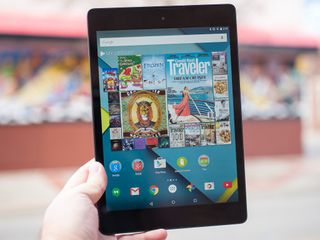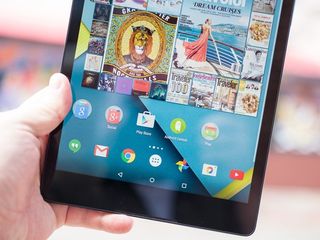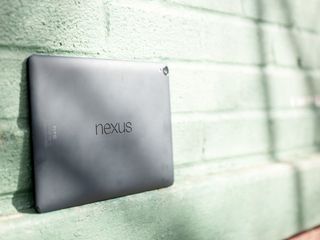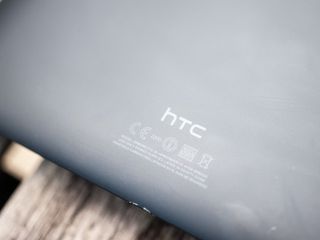The Nexus 9, three months on

An update after 90 days or so with Google's top tablet
Four-hundred-forty-eight days. That's a near eternity between hardware releases in the Android world. But that's how long it took from the announcement of the second-generation Nexus 7 in July 2013 to the Nexus 9 in October 2014.
And quite a bit has changed in that year. Phones have gotten larger and even more powerful. We're two major versions of Android beyond what launched on the Nexus 7. We've gone from a 32- to a 64-bit operating system, on the first major device to ship with NVIDIA's Tegra K1 chipset. We've moved from a 16:10 aspect ratio to 4:3, on a larger display. And we've seen HTC get back into the tablet game, years after its first couple of efforts mostly flopped.
And the Nexus 9 had some big shoes to fill, as its smaller predecessor set the benchmark for an affordable, easy-to-use tablet.
We've been using the Nexus onward of three months now. Let's take a look and see where things stand.
READ MORE: Three months with the Nexus 9
But first, a word from our original Nexus 9 review

Read the Android Central Nexus 9 review
Before we launch into this three-month update of the Nexus 9, we'd be remiss if we didn't give a quick nod to our original Nexus 9 review, as written by Jerry Hildenbrand. Published on Nov. 11, Jerry experienced many of the same gripes I'll also mention here. The question is whether anything has changed in the ensuing months.
Be an expert in 5 minutes
Get the latest news from Android Central, your trusted companion in the world of Android
Ready for more? Read on.
The Nexus 9 hardware: Bigger, more powerful, but better?
Perhaps the biggest change for those of us making the leap from the Nexus 7 to the Nexus 9 was one of ergonomics. Going from something more along the lines of an e-reader to a tablet that definitely takes two hands required a bit of an adjustment.
I might prefer something smaller and skinnier, but I still enjoy the Nexus 9 in my hands.
As far as the size and aspect ratio go, I got used to them easily enough. Letterboxed movies — those black bars you get above and below — don't bother me all that much. Same for YouTube videos, but keep in mind that YouTube has built a really good experience around not playing videos in full-screen mode. And with the sheer size of the Nexus 9 oftentimes I don't bother with the full-screen experience.
Reading books on the Nexus 9 isn't quite as enjoyable for me. It's just not as comfortable in the hand or easy on the eyes as the smaller form factor. I can (and do) read often, it's just a little more work.
Gaming, however, is great on this larger-sized tablet. Touch points are large, of course. And you can see details you might otherwise miss on even a 7-inch tablet. Again, you have to adjust your grip just a bit, but it's worth it for the front-facing speakers, which really should be standard on any tablet at this point. That changes the way you experience everything.
But this somehow still feels like a tablet designed by committee. Not a true HTC product.
The biggest pain point, perhaps, is from the thinness of the Nexus 9. It's got just enough curve to it to be more comfortable than a flat slab of a tablet (in a direct comparison to the Dell Venue 8 7840, for example, the Nexus 9 is easier to hold). But that thinness subjects the tablet to thermal issues. This thing gets hot when you're using it, and it tends to get really hot right where I'm holding it. What's more is that it's not just hot through the back. This is the first tablet I can remember using that's also uncomfortably warm from the front, through the glass display.
That's not a deal-breaker, perhaps, but it's definitely noticeable, and more so than in other tablets we've used.
(You'll noticed how we've not mentioned that air gap in the back of the Nexus 9 until now. That's always been a relatively small cosmetic gripe and in no way has affected the way use use the tablet.)
From a pure power standpoint, I simply don't know how much of a difference Tegra K1 and its 64-bit innards make at this point. It could be working exactly as intended. But so much is dependent on software. For the most part, I've not noticed anything different than when using a "older" 32-bit system. Perhaps that's the point.
The software

So let's talk software. The Nexus 9 was technically the first device with Android 5.0 Lollipop — the Nexus 6 shipped with it a little while later, (though I've been using both for the same amount of time).
Android 5.0 Lollipop on a Nexus 9 still has too many pain points. Too many for me to recommend.
There's nothing inherently special about the Nexus 9 running Lollipop, save for the 64-bit stuff, which you probably won't really notice anyway. Lollipop doesn't "look and feel" like it was made for the Nexus 9 any more than than it was made for the Nexus 7 or Nexus 6. It's Android, running on a tablet.
I'm pretty much on record as not being a fan of the new notification scheme in Lollipop. But seeing as how I don't carry a tablet with me everywhere like I do a phone, I've been pretty must just left them turned of.
The one telling thing about software on the Nexus 9 is just how poorly things start to run after a bit. We've talked about bugs. We've talked about encryption — which in Lollipop is turned on by default — taking longer to write to memory.
I don't care what the reason is. It's simply unacceptable and is the sole reason why I can't recommend the Nexus 9.
Reboots offer a temporary reprieve. But it doesn't take long before it can take six seconds or more between tapping on a notification and the corresponding application finally opening. You get used to it. You learn to grit your teeth and just wait. But it's not a good experience, at all.
If that's truly the trade-off for encryption — and I say this knowing full well the importance of scrambling those bits and bytes — then I choose usability.
Surely that will get better, though, and we'll reach some sort of equilibrium. If you've somehow escaped any of that, well, more power to ya.
Other odds and ends

A few more little things that have popped up over the past three months:
You're going to want to cover this big, beautiful display with something. I'm using the official Nexus 9 Magic Cover and have been mostly happy with it. The magnets keep it on fairly well, though not as good as a more traditional snap-on case will. It's done OK for me while I'm traveling, not sliding off in my bag or anything.
The Nexus 9 Keyboard Folio is another option, and as the name implies it comes with a mini-keyboard. It's a pretty cramped experience, though, and mostly made me want to pick up a laptop instead. Still, it was OK in a pinch.
Even with the Magic Cover, I've got a few cosmetic blemishes in the back cover, sort of like a clear plastic film coming off the finish. (Similar to what happened to my old HTC Thunderbolt, now that I think about it.)
I didn't really touch on battery life until now because as Jerry noted in his review, it very depends on what you're doing. A game heavy on graphics is going to crank up the heat and take a toll on the battery more than reading and browsing will. I've generally been recharging either overnight if I remember to, or at work the next day if needed. A good couple days' use isn't out of the question, it just depends on what I've been doing.
The bottom line on the Nexus 9

I haven't completely written off the Nexus 9 just yet. Not by a long shot. It's a Nexus tablet, and that, by definition, means it's important. It's also the first truly 64-bit platform we've got, and so it's important for developers as well.
The real question is what's going to compete with it? Or, rather, what already competes with it?
If you've got to have something in a wider aspect ratio and smaller size, the 2013 Nexus 7 (if you can get one) is still a really good option. Samsung (as Samsung does) has a number of excellent alternatives. The LG G Pad 8.3 has been underrated. ASUS has a number of other offerings, too. And don't forget Sony.
And those are just the Android tablets we have today. More are coming, and soon.
For now? You're not crazy if you hold off on buying a Nexus 9. And neither are you crazy if you spend your hard-earned $399 on one. (Though we'd recommend splurging $80 more for the 32-gigabyte model, if you can — and the "sand" color is gorgeous.)
The Nexus 9 has growing pains, is all. But let's hope it grows out of them sooner rather than later.

